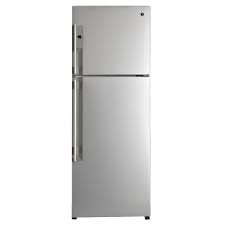Welcome to another detailed exploration at TheKitchenApplianceDad.com, where today we’re diving into a common concern many homeowners face with their appliances: why does my GE freezer turn on and off? If you’ve noticed this happening with your freezer, you’re not alone. This behavior, often referred to as ‘cycling’, can seem perplexing, but it’s a normal operation in most circumstances. However, understanding why it happens and when it might signify a problem is crucial for maintaining the appliance’s efficiency and longevity.
Cycling is the term used to describe the process by which a freezer turns on and off to maintain the internal temperature set by the user. This is controlled by a thermostat, which monitors the temperature inside the freezer. When the temperature rises above a set level, the compressor kicks in to cool it down. Once the desired temperature is reached, the compressor turns off, allowing the temperature to stabilize. This process is normal and necessary for the freezer to function correctly.

The temperature setting on your freezer can significantly impact how often it cycles. If the thermostat is set too low, your freezer will need to work harder and cycle on and off more frequently to maintain that temperature. GE recommends setting the freezer temperature to 0°F (-18°C) for optimal performance and efficiency.
Where your freezer is located can also affect how often it cycles. If the freezer is in a hot environment or near a heat source, it will need to cycle more often to maintain a cool internal temperature. Ensure your freezer is situated in a cool, dry place away from direct sunlight or heating appliances.
Frequent opening and closing of the freezer door can cause warm air to enter, which makes the freezer work harder and cycle more frequently. Additionally, if the door seals are worn out or damaged, cold air can escape, causing the temperature inside to rise and the compressor to kick in more often. Regularly check the door seals for any signs of wear and replace them if necessary.
The condenser coils, typically located at the back of the freezer, are responsible for releasing heat from inside the unit. If these coils are dirty or covered in dust, they can’t efficiently release heat, causing the freezer to work harder and cycle more often. Cleaning the condenser coils every six months can help prevent this issue.
While cycling is a normal part of a freezer’s operation, excessive cycling is not and can be indicative of a problem. Here are a few signs that the cycling of your GE freezer may require further attention:
To ensure your GE freezer operates efficiently and to minimize unnecessary cycling, follow these maintenance tips:
By understanding the cycling process and keeping an eye on these factors, you can ensure that your GE freezer operates efficiently and lasts longer. Remember, if you suspect any serious issues, it’s always best to consult with a professional technician. Happy freezing from all of us at TheKitchenApplianceDad.com!

